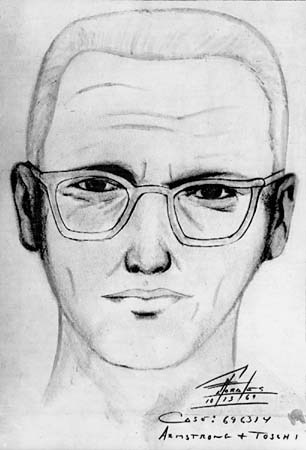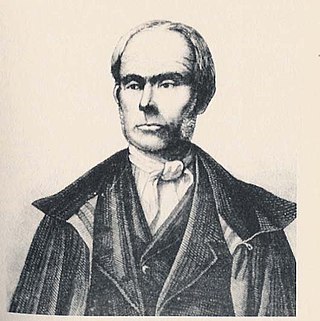
Aileen Carol Wuornos was an American serial killer. In 1989–1990, while engaging in street prostitution along highways in Florida, she shot dead and robbed seven of her male clients. Wuornos claimed that her clients had either raped or attempted to rape her, and that the homicides of the men were committed in self-defense. Wuornos was sentenced to death for six of the murders. She was executed on October 9, 2002, by lethal injection after spending more than 10 years on Florida's death row.

The Zodiac Killer is the pseudonym of an unidentified serial killer who operated in Northern California in the late 1960s. The case has been described as the most famous unsolved murder case in American history, and has become both a fixture of popular culture and a focus for efforts by amateur detectives.

Peter Kürten was a German serial killer, known as "The Vampire of Düsseldorf" and the "Düsseldorf Monster", who committed a series of murders and sexual assaults between February and November 1929 in the city of Düsseldorf. In the years before these assaults and murders, Kürten had amassed a lengthy criminal record for offences including arson and attempted murder. He also confessed to the 1913 murder of a nine-year-old girl in Mülheim am Rhein and the attempted murder of a 17-year-old girl in Düsseldorf.

Gary Leon Ridgway is an American serial killer known as the Green River Killer. He was initially convicted of 48 separate murders committed between the early 1980s and late 1990s. As part of his plea bargain, another conviction was added, bringing the total number of convictions to 49, making him the second most prolific serial killer in United States history according to confirmed murders.

The Monster is a 1994 Italian-French comedy film, starring Roberto Benigni as a man who is mistaken by police profilers for a serial killer due to a misunderstanding of the man's strange behavior. This film was, at the time it came out, the highest-grossing film in Italy, bested later by another Benigni film, Life is Beautiful.

A lovers' lane is a secluded area where people kiss, make out, or engage in sexual activity. These areas range from parking lots in secluded rural areas to places with extraordinary views of a cityscape or other features. The Oxford English Dictionary records use of the phrase "lovers' lane" from 1853.
Donato Bilancia was an Italian serial killer who murdered seventeen people – nine women and eight men – on the Italian Riviera in the period from October 1997 to April 1998.

Mario Spezi was an Italian journalist, author, illustrator, and caricaturist. He wrote the non-fiction true crime books Dolci Colline di Sangue (2006) and Il Mostro di Firenze (1983). He was a co-author in the book The Monster of Florence A True Story (2008) with American author Douglas Preston. Additionally, he was credited by Preston for providing details used in the novel Brimstone.
Internet homicide refers to killing in which victim and perpetrator met online, in some cases having known each other previously only through the Internet. Also Internet killer is an appellation found in media reports for a person who broadcasts the crime of murder online or who murders a victim met through the Internet. Depending on the venue used, other terms used in the media are Internet chat room killer, Craigslist killer, Facebook serial killer. Internet homicide can also be part of an Internet suicide pact or consensual homicide. Some commentators believe that reports on these homicides have overemphasized their connection to the Internet.

The Monster of Florence is the name commonly used by the Italian media for an unidentified serial killer active within the Metropolitan City of Florence between 1974 and 1985. The Monster murdered fourteen victims, usually young couples secluded in search of intimacy, in wooded areas during new moons.

The Embalmer is a 1965 Italian giallo film directed by Dino Tavella, and starring Gino Marturano, Alcide Gazzotto, and Alba Brotto. Dino Tavella had a very short career in the Italian film industry, writing and directing only two films, The Embalmer and Una Sporca Guerra.

The Gilgo Beach serial killings were a series of killings between 1996 and 2011 in which the remains of 11 people were found in Gilgo Beach, located on the South Shore of Long Island, New York, United States. Most of the known victims were sex workers who advertised on Craigslist. The perpetrator in the case is known as the Long Island Serial Killer (LISK).
Giuliano Mignini is an Italian magistrate. He retired as a public prosecutor in Perugia, Umbria, in 2020.

Antonio Boggia, aka "Il Mostro di Stretta Bagnera" or "Il Mostro di Milano", is considered the first serial killer of Italy.
Giorgio William Vizzardelli, known as The Monster of Sarzana, was an Italian serial killer.
Luigi Chiatti is an Italian murderer, named "The Monster of Foligno" by the media.
Ralph Lyonel Brydges was an English Protestant pastor and paedophile who was accused of being "The Monster of Rome", a suspected serial killer of young girls who was active in Rome from 1924 to 1927. Another man, photographer Gino Girolimoni, was wrongfully accused but later exonerated of the crimes, for which the inspector Giuseppe Dosi later accused Brydges of committing. Brydges was never tried for the crimes, amidst pressure from the British government, and later left Italy, supposedly committing other killings in other countries before his death in 1946.
Gino Girolimoni was an Italian photographer wrongly accused of being "The Monster of Rome" who killed children in Rome during the era of Fascist Italy. Girolimoni, il mostro di Roma, a 1972 film by Damiano Damiani, recounts the persecution that Girolimoni underwent in spite of his innocence.











